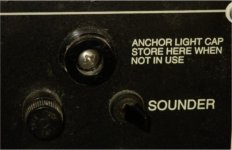flexing from the weight being further from the fulcrum would be amplified by increasing the lever arm i.e in the raised position. Shortening the lever arm would physically reduce the force as the rotational inertia is null or nominal.
If I tried using those words, DoD would beat the crap out of me!
Actually, having the motor tilted full up and on the storage lever provides the least forces other than sheer weight to the transom. And with it up, the weight is focused straight down rather than off center. Look at it this way: With the motor down, the weight of it is trying to force it to fall off the back, and it is held by only the four bolts, with only the top two holding most of the load. With it tilted up having most of the powerhead weight ahead of the transom and all the lower unit weight behind the transom, the weight is trying to force the motor to fall through the bottom of the boat. The same bolts and material are holding the weight, but they are now in sheer condition rather than tensile, and the weight is divided between them all, as well as being distributed over a lot more fiberglass. It might appear that you would get more "rocking" forces with the motor up, but if you were to relieve the pressure in the hydraulic circuit you would find that the motor is pretty well balanced. I think they build 'em that way. Or look at it like this: With the motor down, all of the weight is behind the fulcrum; with it up, the weight is split between the two sides of it. But as tough as the CD transoms are, it doesn't matter much to it how you have the motor, so if you have room to leave it down while towing and prefer it, that's the way you should do it.
My comment, however, was directed toward the use of a transom saver device. Bad idea unless the trailer supporting one end of it does not move or flex relative to the transom which is ultimately holding the other end. Almost impossible with a CD22, no matter how you string it up or tie it down.


